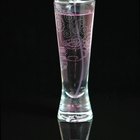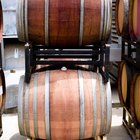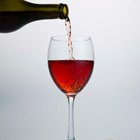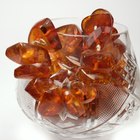
Do you know the difference between alcohol percent and proof? Read on learn their definitions, history and how to use percent to calculate proof.
What is Proof?
In the 1700s, if someone wanted to know that the whiskey they were purchasing was pure they had to "proof" it. This process entailed combining a small portion of the spirit with gunpowder and igniting it. If the liquid flamed up, it was proven; therefore, it had a certain proof. A steady burning blue flame meant it was a 100 proof spirit; a yellow flame that burned out quickly indicated an "overproof" spirit, meaning it contained more alcohol. If the mixture didn't burn,it was called "underproof," even though it may have contained alcohol.
Percentage by Volume
The letters ABV in reference to an alcoholic beverage or the words "alcohol by volume" on a label simply refer to the percentage of alcohol the liquid contains. In the United States, if you double the percentage listed, you get the proof of the spirit, so, 40 percent alcohol would mean the liquor is 80 proof.
History and Government Regulation
In the 18th century, a 40 percent alcohol by volume spirit would've been considered "underproof," but this term doesn't have much meaning anymore beyond a historical perspective. The majority of spirits sold these days, including many popular brands of whiskey, vodka and other liquors, are commonly between 80 to 90 proof. For spirits sold in the United States, listing a proof on the label isn't mandatory, although you will commonly see one printed alongside the required listing of the percentage of alcohol.
Outside the U.S.
In the United States, proof is simply twice the percentage of alcohol, but that's not the case in other countries. Since original proofing methods weren't exact scientific measurements, they never were accurate for determining true alcohol content. Therefore, different scales of measurement were adopted over time. That's why, for instance, if you buy a bottle of cognac in the United Kingdom and then head to France to purchase the same-sized bottle of the same brand, it may be labeled differently.
Related Articles
What Is the Difference Between 80 & 100 ...

What Is the Highest Proof Tequila?

Difference Between Percent Alcohol & ...

What Is the Highest Proof Vodka?

What Do the Numbers Mean on Perfume ...

How Long Does Liquor Keep in Storage?

How Much Is a Single Serving Size of a ...

Brandy vs. Whiskey

How to Calculate Alcohol Content in Wine

What Is 916 in Jewelry?

How Long Can a Bottle of Vodka Last ...

How to Make Alcohol at Home

How Strong Is 120 Proof Vodka?

Does Vodka Settle to the Bottom of a ...

What Is Cognac Amber?
Calories in Charles Shaw Wine
How Long Can You Keep an Open Bottle of ...

What Is the Highest Proof of Every ...

History & Background of Nike

What Is the Difference Between Wine & ...
References
Resources
Writer Bio
Blake Guthrie covers travel, entertainment and outdoor recreation for many outlets, including the Atlanta Journal-Constitution, where he is a regular contributor. With years of experience as a professional cook, Guthrie also relishes writing about food and beverage topics. He earned a Bachelor of Arts in mass communications from Auburn University.
Photo Credits
Goodshoot/Goodshoot/Getty Images